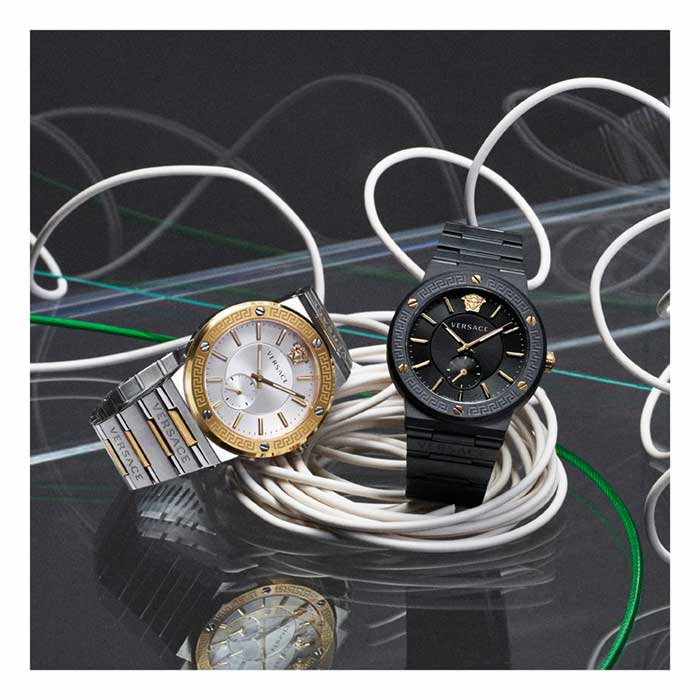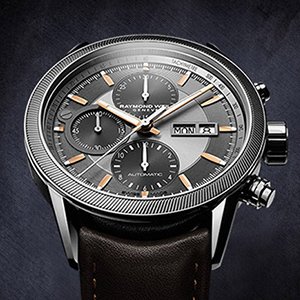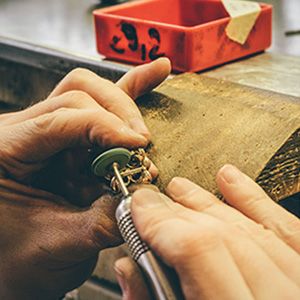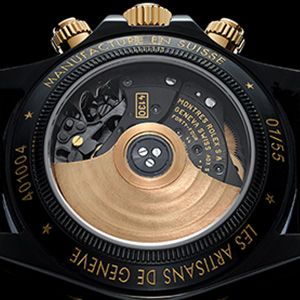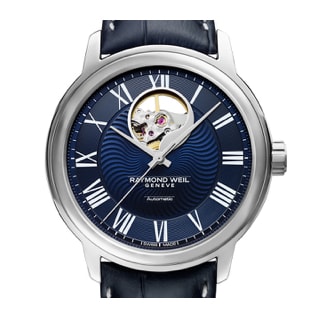You have no items in your shopping cart.
Inside the Raymond Weil Maestro Collection
In the 1970s, when Raymond Weil began his eponymous brand, the Swiss watchmaking world was lacking a beautiful watch at an attainable price. Weil, who had worked in the watch industry for 27 years before breaking out on his own, decided to blend his passion for watches and love of the arts and especially music, and to answer the calling in the market for creativity and affordability.
From the get-go, Raymond Weil unveiled watches with classic yet edgy designs. He named his collections after operas and ballets and unveiled a fantastic advertising campaign (for the era) that captured dancers in mid-air. Music and the arts—with their shared values in precision, performance and passion—became an integral part of Raymond Weil’s design and branding.
Among Raymond Weil’s key collections early on were Nabucco and Parsifal, named for the Italian and German operas, respectively. These collections were followed up by the Toccata, named for a virtuoso piece of music; the Tango; and the Maestro, referring to a conductor of classical music.
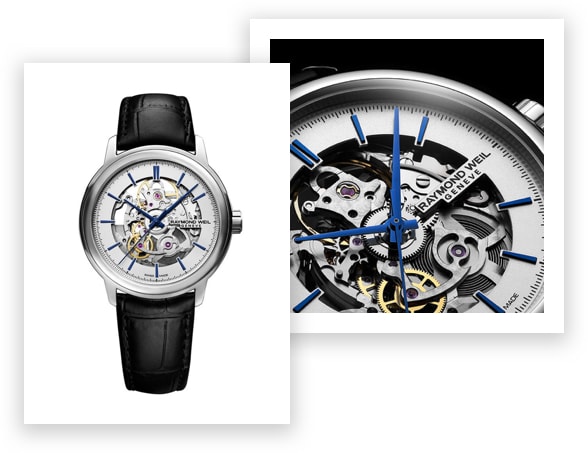
A Closer Look at the Raymond Weil Maestro
Easily one of the most beloved Raymond Weil collections is the Maestro. Boasting clean lines and generous proportions that offer elegance and function, this collection of watches from the brand offers some of the most sophisticated functions.
Introduced to the world in 2010, the Maestro series consists of exclusively mechanical watches created with updated and modern yet classic designs. Some of the watches offer useful functions, such as date indications, moon phase indications, calendars, and chronographs. Others feature some visually appealing accents, such as guilloche center dials, apertures for viewing the movement, and even the beloved open-worked skeletonized watch.
In fact, the Maestro Skeleton is one of my favorite Maestro watches because it offers both an alluring look and a technically-advanced caliber. In a skeleton watch, much of the metal has been whittled away to allow for the open look, yet the components must still be strong enough to do their job without breakage. With a sapphire crystal and caseback, the Maestro Skeleton offers a grand view into the mechanics and reminds me of the incredible orchestration of parts that come together to track time perfectly, much like a fine musical score.
Article by Roberta Naas
Roberta Naas is a veteran watch and jewelry industry insider and influencer. A journalist with more than 30 years in the field, Naas pioneered as the first female watch writer in America. An award-winning writer, she travels the world to uncover stories, conduct interviews, and bring the newest watch and jewelry information to the forefront. She has authored six books on watches, writes for such esteemed publications as Forbes and Elite Traveler, and is the founder of www.ATimelyPerspective.com.


















